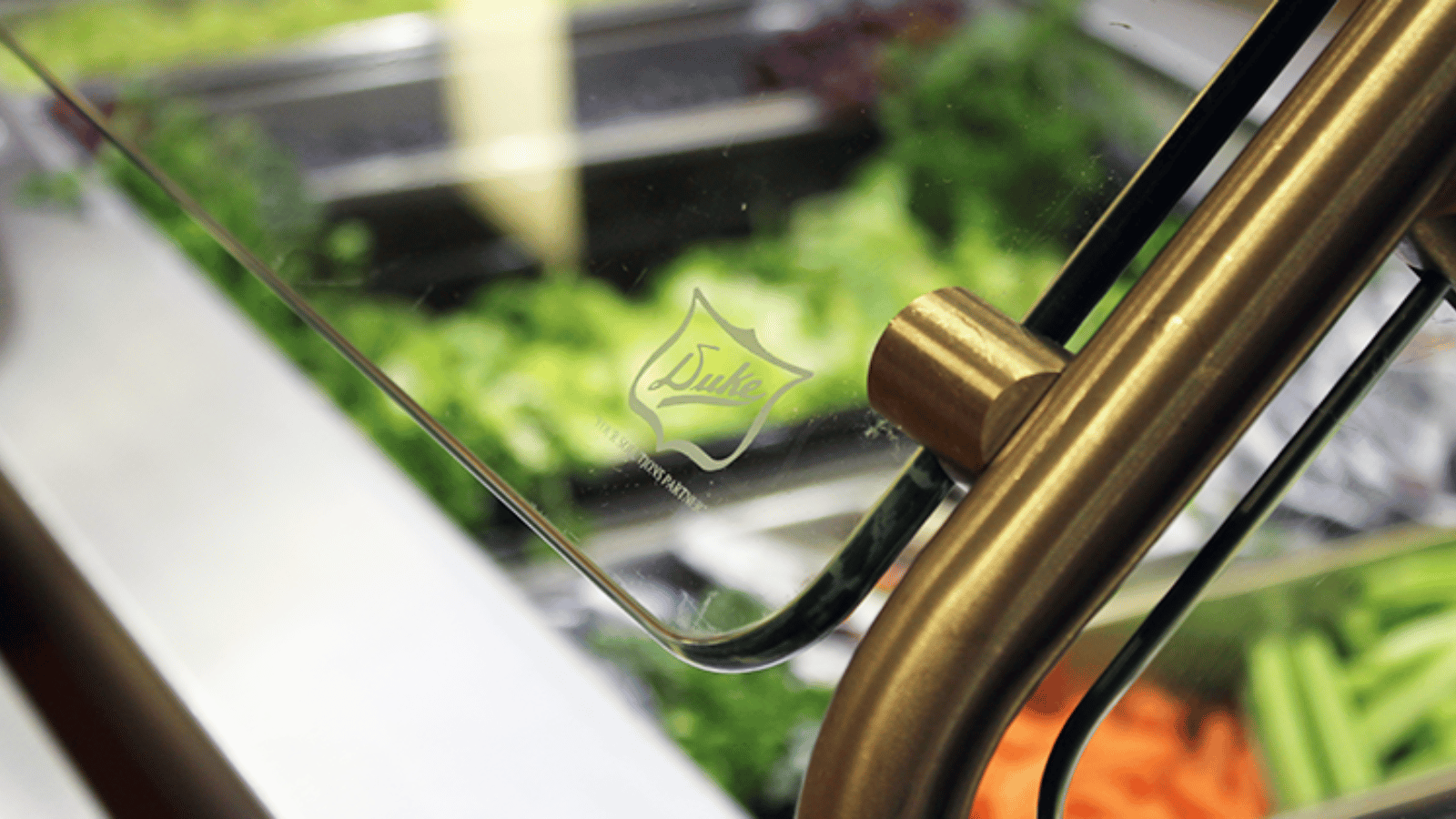Welcome to the PMR Foodservice Blog

Ultimate Guide to Choosing School Serving Lines for K-12 Cafeterias
A well-designed school cafeteria serving line can make all the difference in ensuring efficient, safe, and appealing meal service for students. When choosing K–12 school serving lines, school nutrition directors should prioritize convenience of use, durability, and safety over aesthetics. Whether renovating an existing line or building one from the ground up, one key is selecting the right equipment units that will encourage the consumption of healthy foods, provide extended ROI, and meet the unique demands of K-12 cafeterias.
The Importance of Quality School Serving Lines
Investing in high-quality serving lines pays off in more ways than one. Durability is one of the most significant benefits—sturdy materials reduce maintenance costs, minimize downtime, and keep the cafeteria running smoothly. Additionally, a well-designed layout of serving lines can enhance overall cafeteria efficiency, speeding up service during peak hours and making it easier to manage high student volumes.
Quality serving lines designed for easy cleaning are essential in school environments where hygiene and safety are top priorities. The right serving line can also enhance the cafeteria's overall look and feel, creating an inviting atmosphere that encourages students to make healthy choices.

Constructing School Serving Lines with Durable Materials
When selecting school serving counters, choosing materials that can withstand the daily wear and tear of a busy cafeteria is vital. Stainless steel is often a top choice because of its durability, ease of cleaning, and corrosion resistance. High-quality construction ensures that the serving line will last for years, providing a solid return on investment.
Creating a Visually Appealing Environment
The appearance of the serving line can influence students' choices. An attractive serving line design, with bright colors and clear signage, can create an inviting atmosphere that encourages students to choose healthier options. Consider decoration styles that align with your school's branding while keeping the cafeteria space visually appealing and engaging for young diners.
Choosing the Right Well Configuration for School Serving Lines
The configuration of wells in the serving line is crucial for maintaining different types of food at optimal temperatures. Whether it's hot entrees or chilled salads, proper well setup is important for food safety and quality. Also, ensure the wells are versatile enough to handle varying menu items and volumes throughout the school year.
How serving lines are set up in schools also impacts how much time children have to eat. Long lineups result from insufficient serving lines, which gives students less time to eat. Also, some children might avoid the line so they don't have to wait. So, having multiple locations to select food and checkout can help nourish children.
Enhancing Presentation and Accessibility with Merchandisers
Display cases and merchandisers play a role in presenting food in an appealing way. Clear and accessible food presentation encourages students to explore options and increases meal participation. Merchandisers should be easy to adjust and keep clean, ensuring the cafeteria always looks well-stocked and organized.
Ensuring Student Safety and Food Hygiene
On average, school-aged children have five or six illnesses per year. These could be stomach bugs, colds, or respiratory infections. And while in a perfect world, everyone would keep their child home when they're not feeling well, that's not the case.
That is why proper safety guards, also known as food shields, are essential to protect other students and food. These guards on school serving lines maintain food hygiene by preventing contamination while also providing a clear view of the available choices.
K-12 Serving Line Solutions from Duke
.png?width=1000&height=667&name=holland-hall-2%20(1).png)
Duke offers several specialized solutions that cater specifically to the needs of K-12 cafeterias, each designed to enhance meal service and efficiency in school settings. Duke's serving lines are known for their durability, flexibility, and adaptability, which makes them an excellent choice for busy school environments that require reliable and customizable options.
Thurmaduke

The Thurmaduke serving line stands out due to its versatile temperature control. It allows schools to maintain both hot and cold foods at their ideal serving temperatures. This flexibility ensures that meals remain fresh and appealing, improving food quality and student safety. Nutrition directors may confidently oversee a varied menu without sacrificing quality when they use Thurmaduke.
Aeroserv

For schools prioritizing aesthetics and durability, Aeroserv offers a customizable serving line design tailored to fit any cafeteria style. The combination of sturdy construction and visual appeal ensures the serving line not only withstands the rigors of daily use but also creates an inviting atmosphere that encourages students to make healthy choices. Aeroserv's design versatility allows for easy creation of a serving line that corresponds with the school's unique needs and branding.
CounterCraft

Meanwhile, CounterCraft provides fully customizable serving lines ideal for school cafeterias needing adaptable configurations. Its flexible setup allows schools to modify their serving line layout to accommodate menu or serving requirements changes throughout the year. This adaptability makes CounterCraft an excellent long-term investment for schools looking for a versatile solution to grow alongside their needs.
 One standout feature that sets them apart is Duke's hot-cold-freeze wells. Designed to provide adaptability for school cafeterias, these wells allow nutrition directors to effortlessly switch between hot, cold, and frozen settings, accommodating diverse types of food with only one piece of equipment. This flexibility is crucial for schools that need to serve a wide variety of menu items—from hot entrees to crisp salads and even frozen treats—while maintaining optimal food quality and safety.
One standout feature that sets them apart is Duke's hot-cold-freeze wells. Designed to provide adaptability for school cafeterias, these wells allow nutrition directors to effortlessly switch between hot, cold, and frozen settings, accommodating diverse types of food with only one piece of equipment. This flexibility is crucial for schools that need to serve a wide variety of menu items—from hot entrees to crisp salads and even frozen treats—while maintaining optimal food quality and safety.
Duke's hot-cold-freeze wells, which include easy-to-adjust temperature settings, help keep every meal fresh and appealing. This not only improves the dining experience for students but also reduces waste by ensuring that food is always stored at the appropriate temperature.
Thinking about revamping your school's serving lines? Get started with our K-12 foodservice review.
Subscribe Here!
Lists by Topic
- Restaurants (23)
- PMR Preview (18)
- K-12 School Nutrition (12)
- Beverage (8)
- Vulcan (7)
- Healthcare (5)
- Hospitality (5)
- Ovention (5)
- Duke (4)
- Trends (4)
- Ventless (4)
- Winco (4)
- Convenience Store (3)
- Food Safety (3)
- Hatco (3)
- ITW (3)
- PMR (3)
- Perlick (3)
- Traulsen (3)
- Waring (3)
- Bakery (2)
- Carlisle Foodservice (2)
- College & University (2)
- General (2)
- Griddle (2)
- Prince Castle (2)
- Spaceman (2)
- Takeout & Delivery (2)
- Thermo-Kool (2)
- Araven (1)
- Charbroiler (1)
- Choice Equipment Company (1)
- Correctional (1)
- Dinex (1)
- Dish Machines (1)
- Frying (1)
- G.E.T. Serveware (1)
- Hobart (1)
- Holidays (1)
- QSR (1)
- RATIONAL (1)
- Recipe (1)
- Silver King (1)
- Titan Stainless Steel (1)

